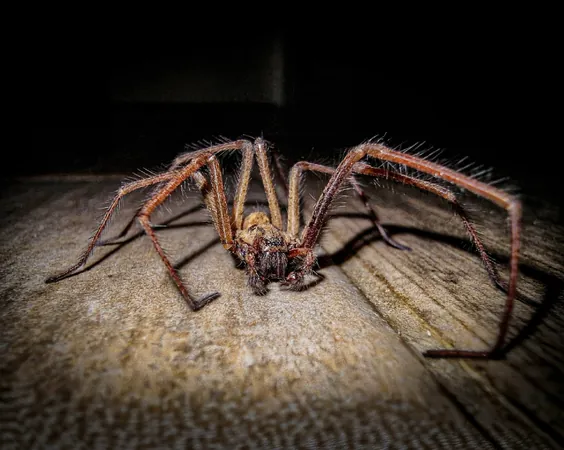
Unraveling the Mystery: How Cave-Spider Species Lose Their Vision Over Generations
2025-03-23
Author: Nur
The Impact of Darkness on Eye Development
Many species that reside in dark environments exhibit varying levels of eyesight loss. While certain animals, such as blind cave fish and some amphibians, have adapted to their conditions with enhanced other senses, the same phenomenon is observable in Tegenaria pagana. The stark differences in eye size among populations of this spider species provide researchers with an opportunity to investigate how genetic factors contribute to changes in vision.
Genetic Blueprint for Vision
Eye development in spiders is regulated by a genetic pathway known as the retinal determination network. This intricate system controls the activation of genes responsible for the formation of visual organs. A key player in this process is the sine oculis gene, critical for the formation of functional eyes.
Through innovative techniques such as fluorescence staining and confocal microscopy, researchers were able to monitor gene activity throughout the growth of spider embryos from fertilization to hatching. Remarkably, they discovered that even slight adjustments in the timing of embryonic development can significantly alter the formation of eyes and other bodily structures.
Evolutionary Insights from Cave-Dwelling Spiders
The study of cave-dwelling spiders like Tegenaria pagana sheds light on how life adapts to lightless environments. As some of its relatives exhibit varying degrees of eye size reduction, the findings contribute to a broader understanding of evolutionary adaptations in total darkness. Each degree of vision loss correlates with new challenges and adaptations, suggesting a complex evolutionary trade-off as these spiders manage the transition from light to dark habitats.
Trade-offs: Vision Versus Other Senses
In examining the genes involved in eye formation, scientists revealed that certain mutations can inhibit the full development of vision in spiders, pinpointing why some cave-dwelling species retain partial eyesight while others become completely blind. As they lose visual capability, these spiders may gain heightened sensitivity in other senses like touch or smell—compensatory adaptations crucial for survival in their dim environments.
Future Directions in Research
The researchers envision future studies that will delve deeper into the genetic mechanisms behind blindness in other cave species, including crustaceans and amphibians. By tracing similarities across various species, biologists hope to understand whether evolution follows comparable patterns and how those adaptations emerge in response to extreme environments.
Dr. Gavish-Regev emphasizes that the ongoing research into Tegenaria pagana not only furthers our understanding of eyesight loss in subterranean creatures but may also have practical applications. Insights gained from these studies could eventually refine pest management strategies in human habitats and enhance knowledge around ecosystem health in unexplored caves.
As scientists continue their journey into the depths of cave ecosystems, the revelations regarding the evolution of sight—or the loss thereof—might just shine a light on the ancient paths of life's adaptations in the shadows of the earth.

 Brasil (PT)
Brasil (PT)
 Canada (EN)
Canada (EN)
 Chile (ES)
Chile (ES)
 Česko (CS)
Česko (CS)
 대한민국 (KO)
대한민국 (KO)
 España (ES)
España (ES)
 France (FR)
France (FR)
 Hong Kong (EN)
Hong Kong (EN)
 Italia (IT)
Italia (IT)
 日本 (JA)
日本 (JA)
 Magyarország (HU)
Magyarország (HU)
 Norge (NO)
Norge (NO)
 Polska (PL)
Polska (PL)
 Schweiz (DE)
Schweiz (DE)
 Singapore (EN)
Singapore (EN)
 Sverige (SV)
Sverige (SV)
 Suomi (FI)
Suomi (FI)
 Türkiye (TR)
Türkiye (TR)
 الإمارات العربية المتحدة (AR)
الإمارات العربية المتحدة (AR)